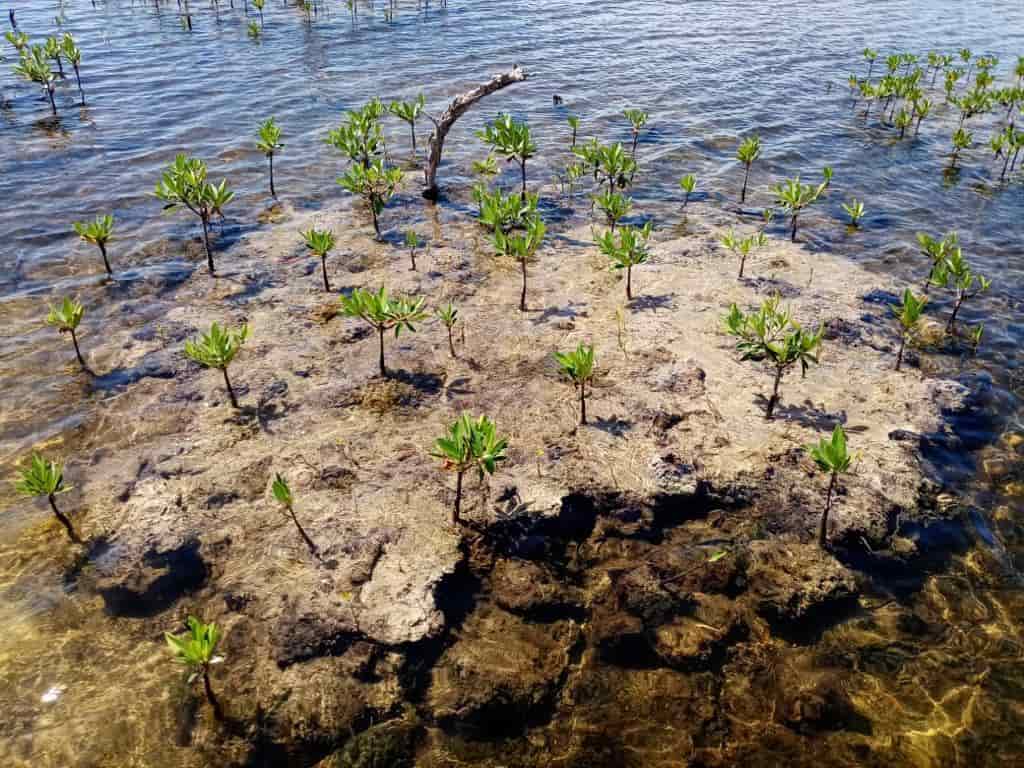How much do you depend on wetlands?
Fresh and saltwater wetlands store and purify water, provide most of the fresh water you can safely drink, clean pollutants naturally, provide food (fisheries and rice fields are among the main ones).

Wetlands store and purify water, provide most of the freshwater you can safely drink, clean pollutants naturally, provide food (fisheries and rice fields are among the main ones). In wetlands 40% of the planet's species live and reproduce, they protect us from floods and storms and some absorb more carbon than forests.
These are the wetlands. The lakes, lagoons, marshes, estuaries, mangroves, and all those floodable places, either constantly, or only part of the year. To raise awareness of their vital importance for humans, the Convention on Wetlands of International Importance, known as the Ramsar Convention, was created in 1971, an international agreement that promotes the conservation and wise use of wetlands. This treaty is unique in the world, as it is the only one that focuses on this ecosystem and every February 2 celebrates World Wetlands Day.
However, 50 years after its creation and where Mexico was part since 1986 with the Ría Lagartos Biosphere Reserve in Yucatán, in 2021 it warns about the freshwater crisis, the relationship with wetlands, and their disappearance, which occurs three times faster than forests worldwide. Therefore, it invites a sustainable use of wetlands, to deal with pollution, to clean these places, and above all to promote actions to restore them and thus stop their degradation.

Water in motion
Mexico has the sixth-largest mangrove cover in the world, above most African and American countries. However, worldwide the annual rate of mangrove destruction is high, estimated at 1.75% of the total area. In Mexico, the loss of this important ecosystem is largely due to hydrological change, i.e., the water does not flow, which causes a degradation in water quality, bad odor, and species that stop visiting the site. This affects not only the landscape and fauna but also directly impacts the local economy since these wetlands offer products for fishing and attractions for tourism, activities on which hundreds of families depend for their livelihoods.
Mangrove recovery brings with it the improvement of wildlife habitat conditions, both terrestrial and aquatic, in addition to being visited by migratory birds, the presence of emblematic species in various sites such as the jaguar, and the productivity of the ecosystem from which the localities benefit.

Dwarf raccoon habitat
Since 2012, Cozumel Island has implemented a mangrove restoration project, mainly affected by Hurricane Wilma in 2005, which covered lagoons and destroyed mangrove areas. As a result of the work carried out, the community has been able to see the return of fauna, such as the island raccoon.
Although raccoons are not rare in the different ecosystems, on Cozumel Island in the state of Quintana Roo inhabits a very peculiar one, the Procyon pygmaeus, emblematically known in the north of the island as the dwarf raccoon that is seen among the mangrove roots. Its small size is the result of the evolution it required to survive on the island. It is endemic, that is to say, unique in the world.

A few facts about wetlands
In 2018, worldwide, inland fisheries alone provided 12 million tons of fish and since then it continues to grow.
Rice paddies feed 3.5 billion people every year.
Wetlands, the most valuable ecosystem, provide services valued at US$47 trillion each year.
More than 1 billion people depend on wetlands for their livelihoods.
They provide a home for nature
Some 200 new species of fish are discovered in freshwater wetlands alone each year.
Each acre of wetland absorbs more than 1.5 million gallons of floodwater.
Twenty-five percent of the species that inhabit them are threatened or endangered.
Climate change is causing increased competition for water.
Population growth, urbanization, the need for food production, among others, require freshwater that is no longer sustainable.
Several conflicts in the world are due to water insecurity and were reflected in 45 countries in 2017.
Source: National Forestry Commission




